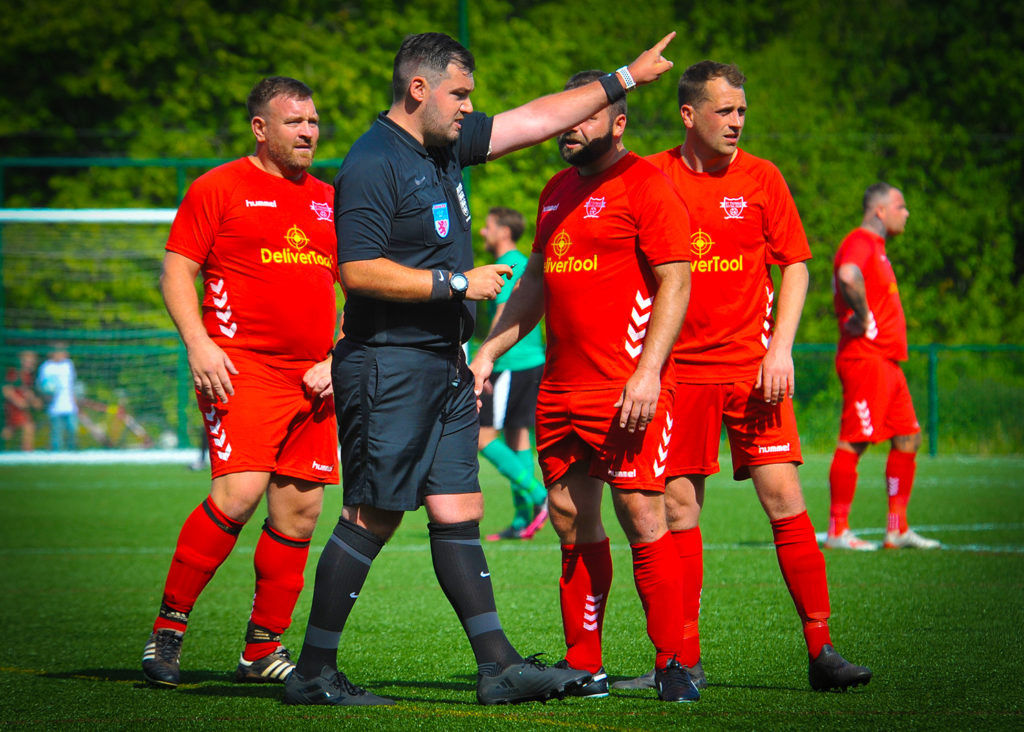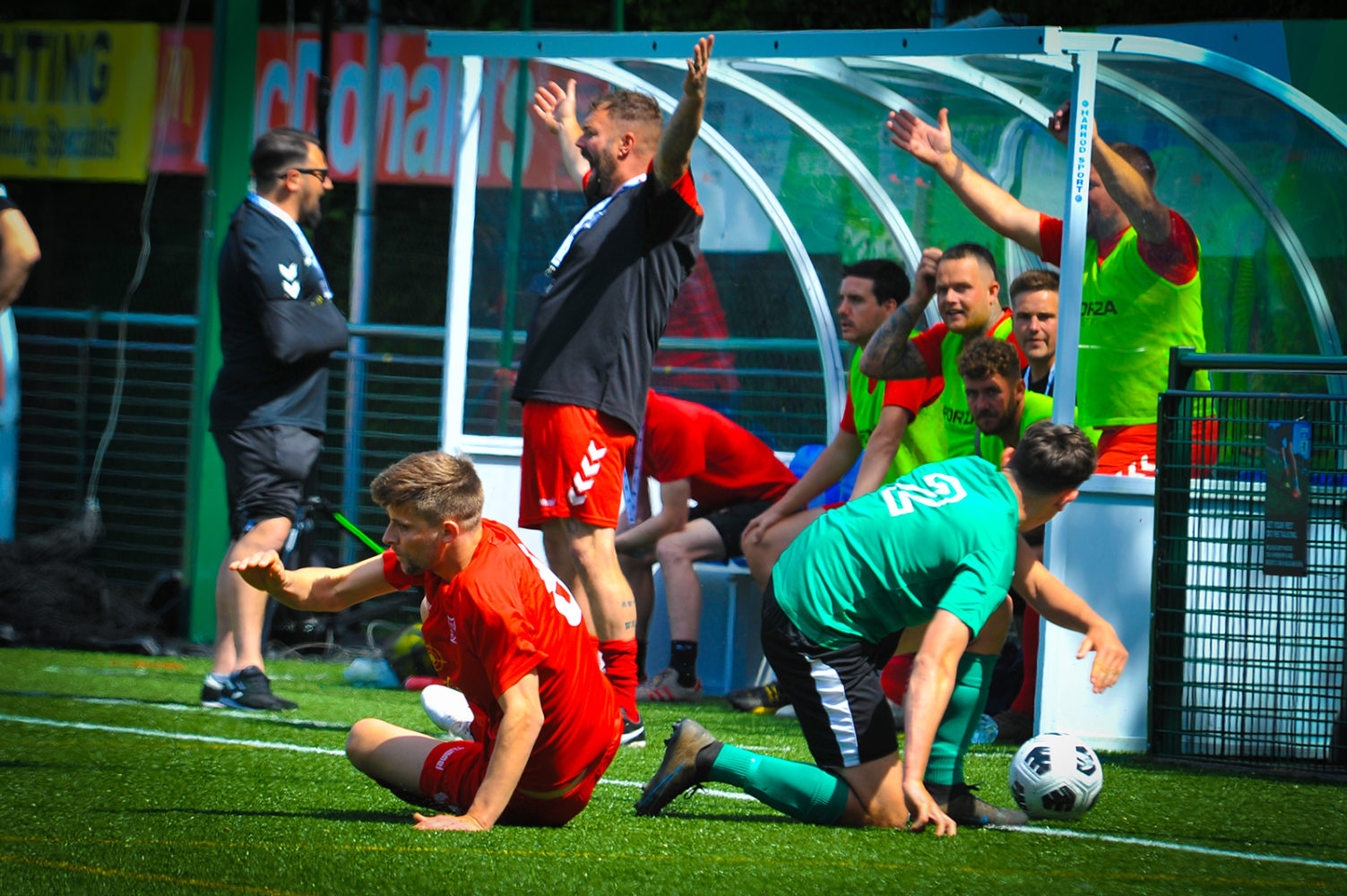Unless you are a paparazzo or a tabloid photographer, you are probably not trying to upset anybody with your photography. Nevertheless, there is always the chance you will capture a controversial incident. Here are a few possible scenarios along with some examples from my own experience.
Scenario 1: Requests for photos as evidence
I recently covered a Sportslighting Devon Premier Cup semi-final for the Devon FA, and the winning team was later disqualified due to playing an ineligible player. That got me thinking about the potential for photographers to unwittingly capture pictures that could be used as evidence for a disciplinary hearing.
In this case, the Devon FA had somehow found out about the ineligible player, but say they hadn’t. What if someone from the opposing team knew the ineligible player and contacted me to see my images? Should I oblige?
My advice is, that unless it’s a specific request from the client who hired you, don’t touch it. Never ever give preferential treatment to one team. You don’t want to get a reputation as a ‘tell tale’ and have to deal with comments from the opposing team every time you’re on the touchline at their games. You want your photography to be enjoyable. Besides, what if that team were about to book you to cover their games for the next season for megabucks a game? As I explained in an upcoming blog about the best way to get work, you have to remember that you are always on parade.
Of course, if the FA had asked me for the player image, I would be morally bound to show them. I would be happy to do so, because it hasn’t come from a desire to gain an advantage over the affected team.
Another example: I was at a riding club, and I was asked, in front of the organiser, whether I had any pictures of a certain rider. The jump judges were saying she hadn’t jumped between the flags, and she wanted to prove that she had. If I had done that, it would have affected the results. And that would have affected too many people for my sales. It would have shown up the jump judges. It would have shown up the organisers, who booked the jump judges. It would possibly have got someone else a place, and got someone else knocked down.
So I said, “I’ll have a look,” but I didn’t get back to her.

Scenario 2: Capturing accidents
Safety comes way before pictures. It’s as simple as that. A perfect example of this was when I was at a duathlon training somebody. A little boy went head over heels over his handlebars on a bend. His helmet came off and he was really hurting. Everyone was looking the other way, because it was quite a way up the track. I just happened to be there shooting that corner. Camera went down. I waved my arms and shouted for medics and then went to help, as I was first on the scene. The first thing you should think of is competitor safety, not taking pictures. You’re there to record nice pictures of them taking part, not being in distress. You don’t want a reputation as an ‘ambulance chaser’, you want a reputation as a nice, helpful guy. By doing that, I made contact with the mum and dad, and later that night I sent them some of the other pictures I had of him racing, and got some nice thank yous. If I had gone steaming in there taking pictures of the accident, I would have seriously upset mum and dad, wouldn’t I? It would have also looked bad to the clubs – some of which had travelled from Exeter, Plymouth and Cornwall. When you’re doing an event where competitors are coming from all over the south west, your reputation spreads further than your local area. You need to think about that before taking that picture.
That’s not to say you should never take a photograph of an accident. Now, this little lad was only about five. His ego isn’t going to be boosted by a shot of him flying through the air. But if an adult competitor comes off their BMX on a chicane, and the photographer just happens to capture it, I’ve seen those pictures sold. The rider’s not on the ground getting treatment, he’s flying through the air, showing how dangerous the event is. It’s bragging rights for him. He can say, “I came off and survived.”
Again, you need to use your professional judgement.
PRO TIP
“I’ll have a look,” is a great stock phrase to use when someone is pestering you for images you don’t want to supply. Tell them that and then just let it lie. They are unlikely to chase you, and the incident will usually blow over. You’re not lying by saying you don’t have the images they want. It’s just a diplomatic way of saying you hope they forget about it!
Scenario 3: Avoiding controversy by managing your background
A novice photographer can cause controversy by accidentally including people or objects in the background of their shots. A professional would never do this, because they know they are being paid to manage the background.
I have seen shirt sponsor shots, where the background contains advertising hoardings from three or four competing sponsors. I have also seen people smoking in the background. That’s not what a sponsor will want to see. If I were a sponsor, I would be annoyed at that. You’re there to create good publicity for that sponsor. Their logo and branding has to be the main focus with no distractions behind them.
As you can see, there are no hard and fast rules about dealing with controversial images. Bear in mind that you are not just paid to take pictures. You’re paid to read the situation and not upset anyone with your pictures. If anything controversial does happen, respond using your professional judgement taking into account the context.

